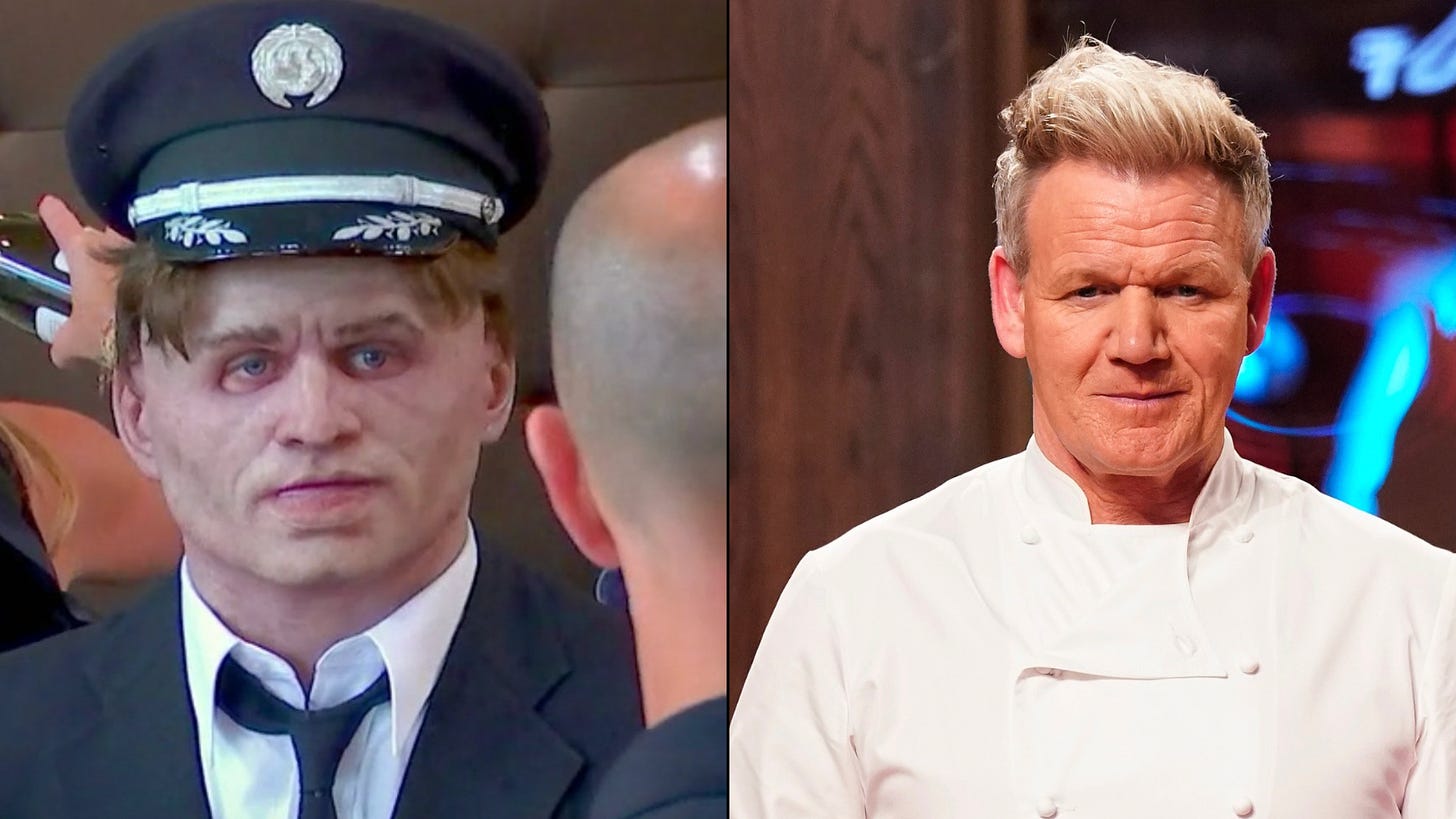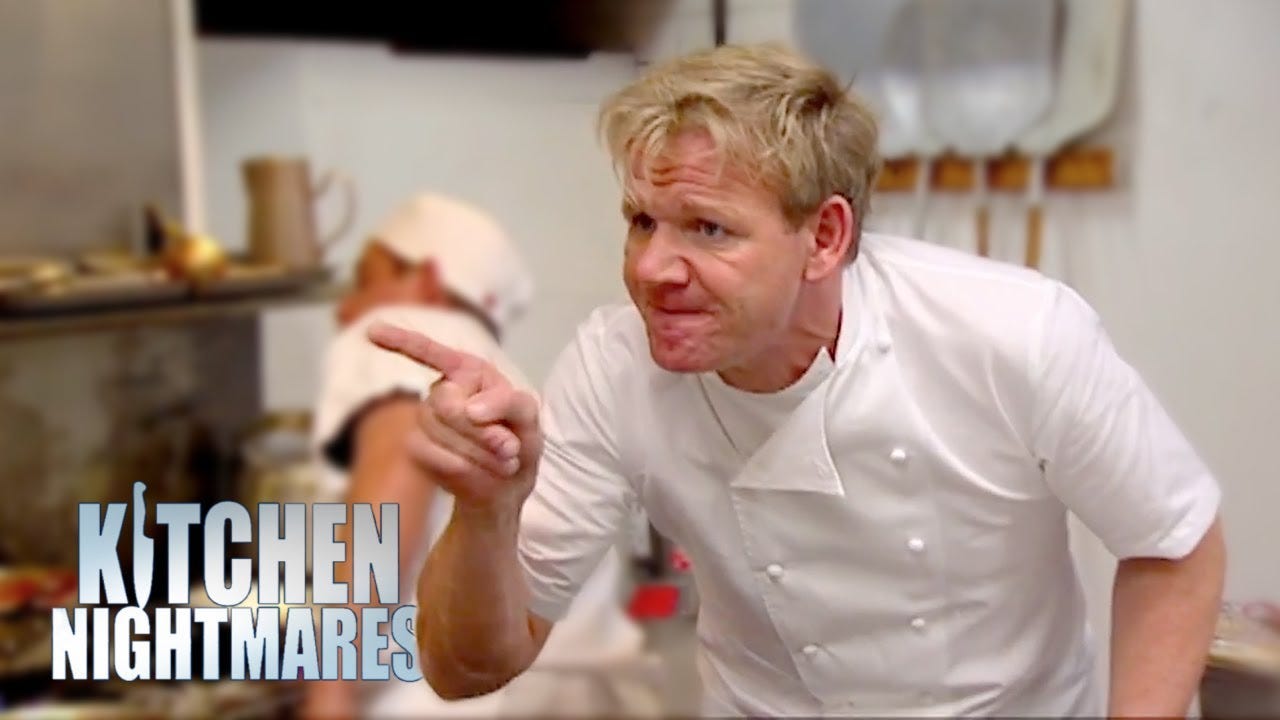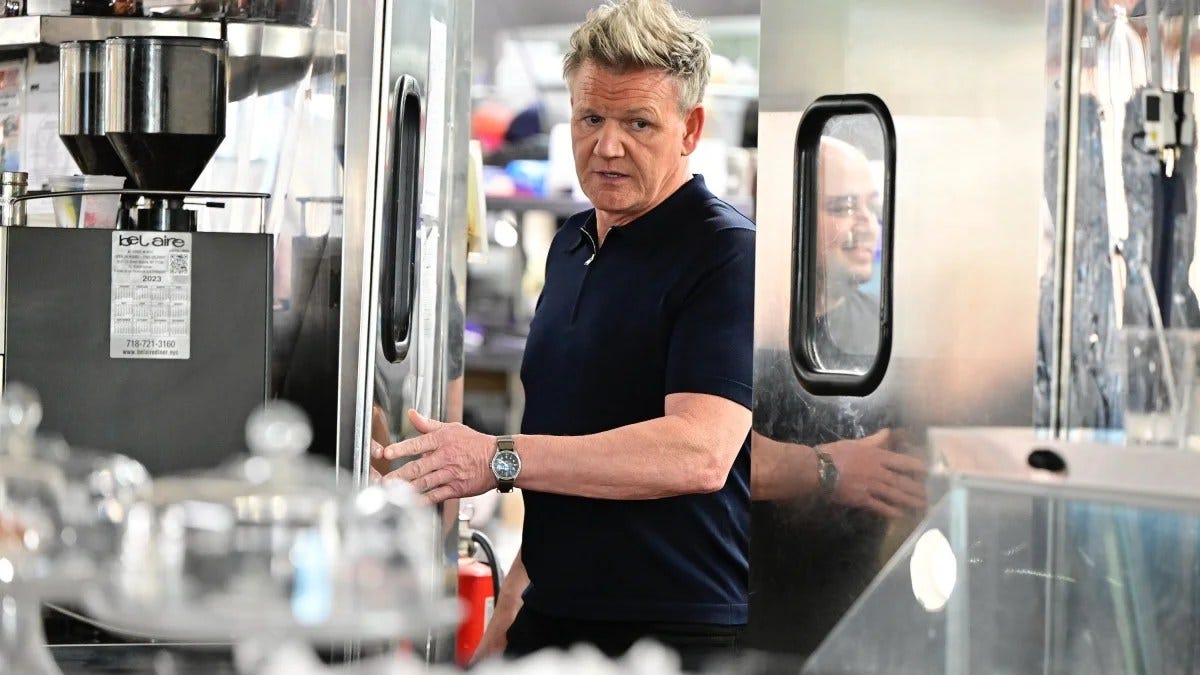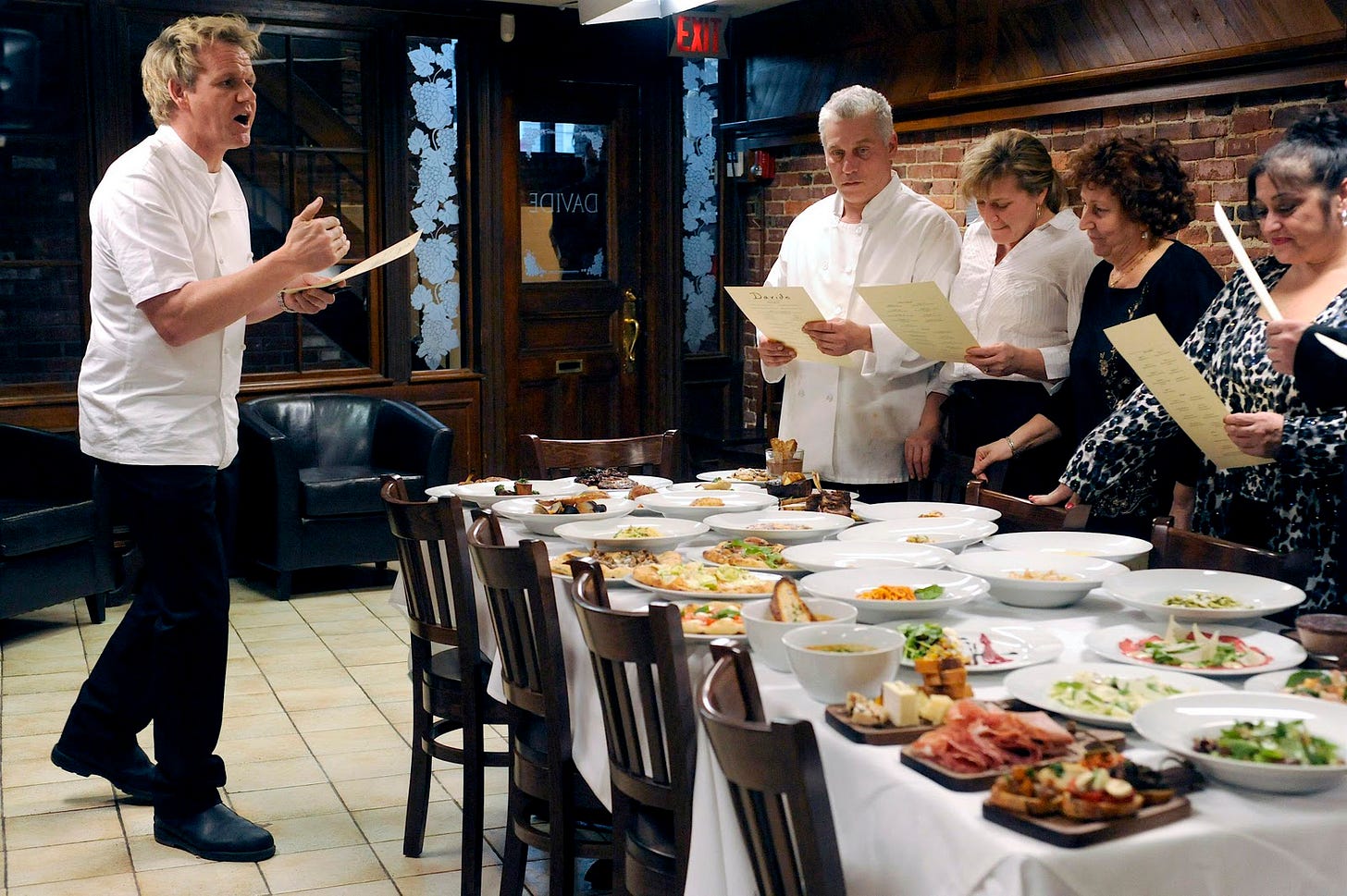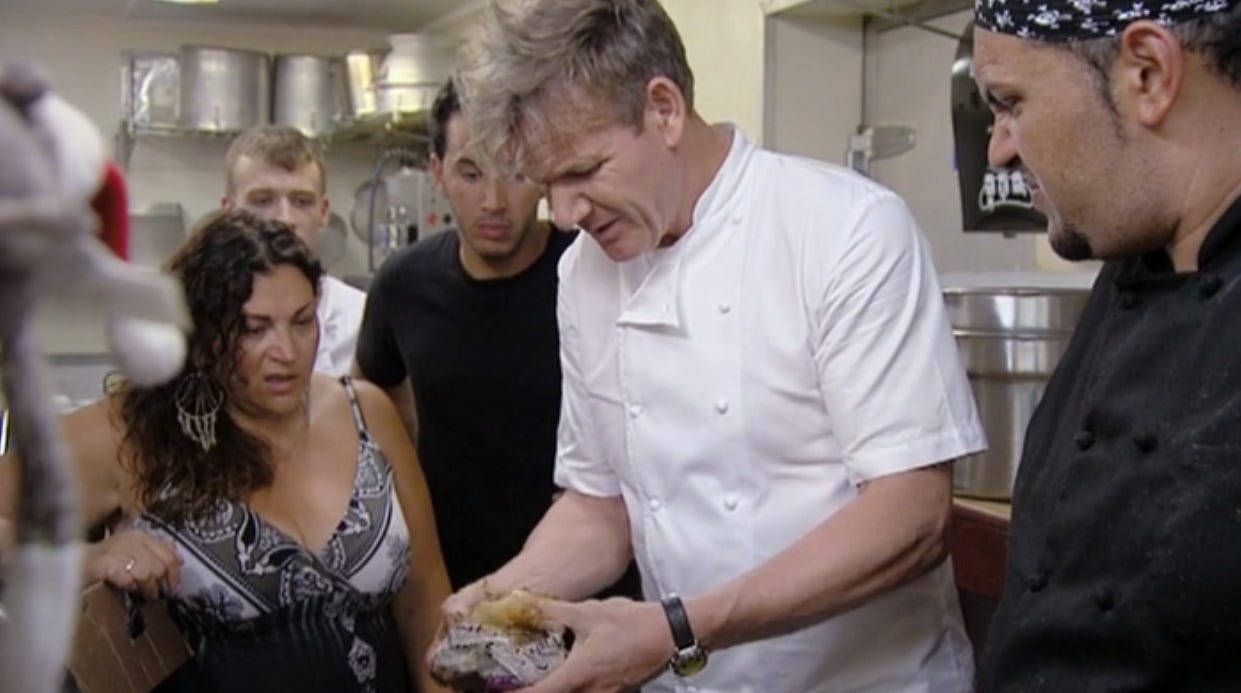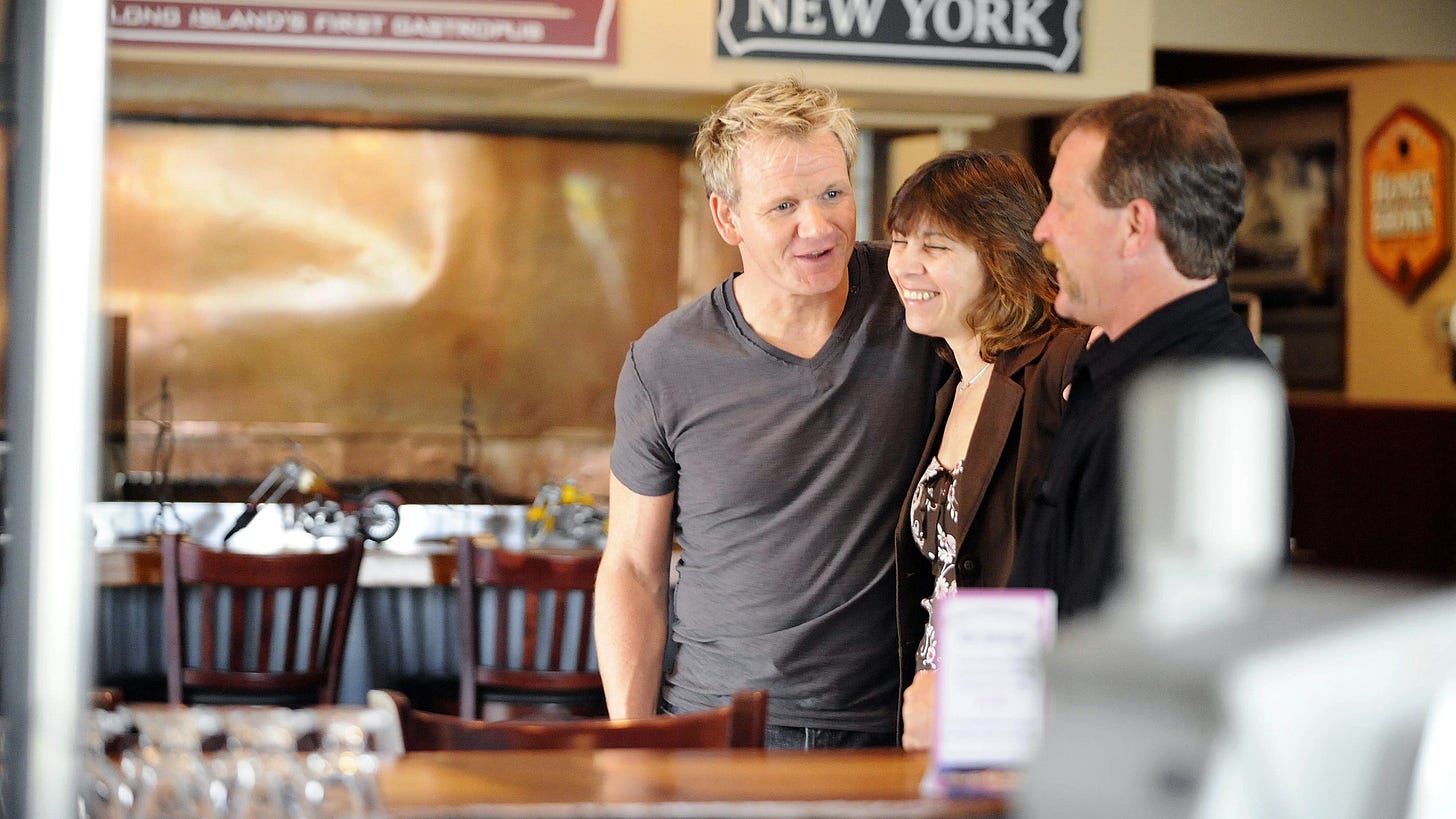6 Things Managers Can Learn From Kitchen Nightmares
..or "how not to be a donut"
World-renowned chef Gordon Ramsay stars in a show called “Kitchen Nightmares” which is all about failing restaurants and how to save them. Ramsay is the hand that pulls the restaurant out of their death spiral and puts them on the road to success. Is it trash TV? Potentially. Each episode follows the same framework and some have claimed that Ramsay fabricates stories to keep the drama high.
The UK version is apparently much more of a “here’s how things ought to work,” while the US counterpart on FOX is “look at this dumpster fire!” Through the gagging noises, the colorful characters, and the raw chicken being left in an unrefrigerated container (90% of episodes), I found some interesting tactics Ramsay employs to get his point across.
If you’re looking to solve problems on your team or within your organization, his tactics on Kitchen Nightmares are a great place to start.
1. Take In The Product As It Is
Each episode starts with Gordon Ramsay sitting down for a meal at the restaurant, ordering food, spitting it into a napkin, and generally calling things “dreadful.” In some cases, he’s worn disguises so the kitchen won’t make extra special efforts, but in the 2023 reboot, he made no effort to conceal who the meal was for.
By examining the final product, he can get an assessment of what is going into it. Frozen ingredients, lack of care (food is raw), lack of knowledge/skill (underseasoned), and sometimes overall confusion (100+ items on the menu).
Ramsay takes a look at the product as it is served to him and begins to assess what might be wrong.
How to leverage this: Look at the output of your teams through the lens of your customer. Whether internal or external, pretend you are on the receiving end of the completed work.
Is the output to your standard? Subpar? Give an honest assessment and think about what parts make up the final product. Even with tech debt, how far in debt are we at the moment? In the show, owners are sometimes $1 million+ in debt, raising the stakes on how quickly the problem needs to be solved.
2. Roughly Identify The Problem
Poor communication, frozen ingredients, arrogance, broken relationships, laziness, and delusional chefs are all common problems identified throughout the show’s eight seasons.
After taking it all in, Ramsay normally has an understanding of where the problem areas are or at least where the biggest problems are coming from.
How to leverage this: It is not always clear where the problem lies within your team or organization. After taking in the product, you can make a rough determination of which two or three things might be the primary driver of dysfunction.
Write down your initial assessment and then proceed to #3. By roughly identifying the problem, you identify a focus area for the remainder of your observation.
3. See The Machine In Motion
After some initial discussions, Ramsay typically watches a lunch or dinner service to see how everything is functioning. He doesn’t hop in and help, he doesn’t try to fix everything out of the gate, he watches. He sees the dynamics between the front of the house, the back of the house, and the chefs themselves.
By observing from the sidelines, he can do what many people haven’t had a chance to do; remove themselves from the situation and look at everything objectively.
How to leverage this: You must be the objective bystander. Remove yourself from the day-to-day and stand to the side, so you can see the whole picture. Look at the interactions on a daily and weekly level to see where the dynamics are poor, and where they’re positive.
Looking at the machine in motion with no involvement gives you a clear look at what falls apart if you’re not at the helm. Things should be running just as smoothly if you hop out (take PTO) or are only guiding with a gentle touch. Observe the machine, and take notes.
4. Reduce The Variables
During the restaurant refresh, Ramsay takes whatever sized menu the restaurant has and re-works it into 5 or 6 items. It’s never explicitly stated, but the thought is, that if we only have a limited number of dishes to make, we should be able to perfect them and get them to diners in a streamlined fashion.
There are other motives there as well, but by reducing the complexity of recipes and reducing the number of ingredients and techniques needed, Ramsay can get a better sense of whether the staff can fix their core problems.
How to leverage this: Remove the obstacles that are getting in the way.
Too many meetings? Consolidate to critical meetings only. Try a week with no meetings.
Too much work? Focus on one core task or piece of functionality a week.
Too many distractions? Get them in a cone of silence so they can stay heads down. This usually involves you being the umbrella for all outside requests which will take some communication with stakeholders.
Too much scope? Take a Wusthof Knife to the project and determine the true P0, P1, and P2 tasks. Slice and dice as needed until the workload seems manageable (without needing 45+ hour weeks).
5. Make Small Tweaks
Once the variables are reduced, Ramsay typically makes a few tiny changes. Kitchen layout shifts, adjustments to the flow of how orders get to the kitchen, or moving the head chef off the line to Expo are common tweaks.
Not all tweaks are successful, but by introducing small adjustments, Ramsay can further pinpoint the problem areas.
How to leverage this: Think about your day-to-day processes and procedures. In some cases this is your sprint ceremonies, how you work with product, or how you intake stakeholder requests.
For the biggest areas of your workflow, consider making small adjustments, working with your team to determine if those small tweaks are helpful. If not, roll them back. If they are, expand upon them!
6. Adjust Your Communication Per Person
Kitchen Nightmares puts a lens on the personalities in each restaurant. From the owner that can’t get out of their own way, to the silent executive chef that is too beat down to continue, Ramsay has to determine how to reach each of them through communication.
I don’t know if he has a team helping with this or if he’s just really good at working with people, but Ramsay changes his communication style to match the individual. In some cases he needs to be blunt and brutal in his comments. In others he is soft and empathetic, trying to get to the emotional side of the manner.
How to leverage this: Remember that each member of your team is different. Different motivations, different needs, different way of thinking. You don’t need a personality test to tell you that a different communication style is needed (though sometimes it helps shine a light on what kind of communication is most effective).
Learn how you communicate best with members of your team, that way direction and feedback are received appropriately.
An Exercise With Gordon Ramsay
Watch a couple of episodes of Kitchen Nightmares. As you do, make your own assessments of what is wrong with the restaurant. Pause the show along the way if you need to, but ask yourself some of these questions.
What or who is the core problem at this restaurant?
What needs to be said to the individuals that work here?
What adjustments would you make to the staff, menu, etc?
How would you go about talking to the folks that are the most disruptive?
It seems silly, but with each episode coming in under an hour, you can get some practice with making quick gut assessments. There’s nothing to lose here, so give it a shot and see what you learn.


